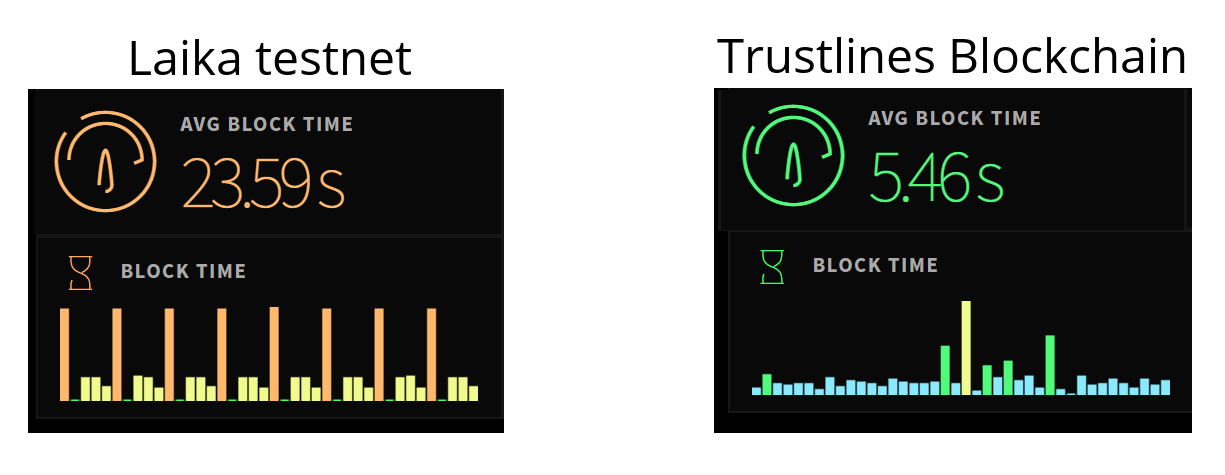The Laika testnet will fork on Tue 24th, CET 11:59 AM. Currently, the testnet isn't usable due to inactive validators. There's also a shift in the logic of the need for a testnet.
In its current state, Laika does not represent a similar environment with the Trustlines Blockchain. This is due to there now only being 6 out of 23 validators still validating new blocks. This has led to a situation where there is no longer finality and, thus, a testnet where people could do some actual testing. Some have switched over to experimenting on the Trustlines Blockchain, but there's still use for a testnet.

Laika was initially launched for testing the viability of the upcoming Trustlines Blockchain. Having a test environment for the validators of the upcoming TLBC was also a vital part of the early life of Laika.
Now, Trustlines Blockchain has been live and operational since November 2019. Similar action to fork out inactive validators on TLBC happened in December. A reference implementation of a mobile app for Trustlines is about to have a beta launch by one of the Trustlines Network members. Trustlines Protocol components are getting regular updates. The situation for what a testnet is needed for has shifted, and along with that, so should Laika itself.
Future of Laika
There's now more of a need for an operational test environment for testing smart contracts, relay servers, and client libraries/apps. The viability of TLBC has been proven, and now it's time to build.
Laika should represent similar conditions of Trustlines Blockchain. With that, developers can test their software before deploying it for production on TLBC. For this, there has to be stability in the system.
That's why the Trustlines Foundation is now taking the lead in ensuring the operability of Laika on behalf of the broader Trustlines Network. The number of validators on Laika will be reduced to five with no plans to introduce more. These five validators will also act as bootstrap nodes for those who might wish to run their nodes on Laika. It will be the responsibility of these validators to be highly available and secure persistent data storage on Laika. For those looking for connecting to Laika without running a node, public RPC endpoints can be found at the Trustlines Blockchain Nodes list.
What will happen
The clients of the six still active Laika validators will stop validating blocks and continue to synchronize the chain as soon as the fork has concluded. Afterward, they can stop their nodes or switch them to the observer or participant role if they want to keep running their node. If all goes well without hiccups, the whole process will take less than 10 minutes.
Because Laika is no longer able to reach finality on blocks, the fork will need three separate steps. The first one is a temporary one that defines the five new validators in a static JSON array within the chain specification file itself. This being off-chain means it does not need finality. Having these validators active will then restore finality. Once block finality has been reached, the final step is to switch to the new ValidatorSet contract on-chain.
We want to thank all the voluntary validators on Laika thus far. There has been a lot learned from this experience. We've learned much about things like how the validators can, and do, run their nodes and about orchestrating a fork.
Keep your eyes open for more news coming soon and discuss this post at the Trustlines Forum!

